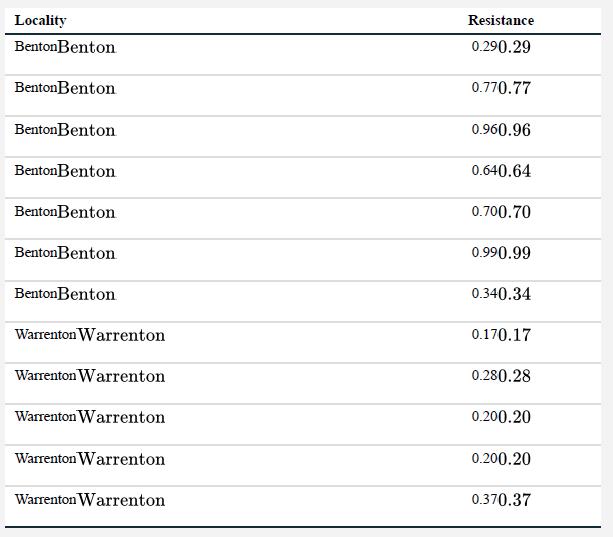The skin of the rough-skinned newt, Taricha granulosa, stores an extremely poisonous neurotoxin called tetrodotoxin (TTX). In
Question:
The skin of the rough-skinned newt, Taricha granulosa, stores an extremely poisonous neurotoxin called tetrodotoxin (TTX). In some geographical areas, garter snakes, a newt predator, have evolved some resistance to this toxin. In these areas, the newts make up a substantial part of the snakes’ diet. As a first step to understanding the evolution of these traits, researchers compared resistance to TTX between two Oregon populations of garter snakes, one near Benton and the other near Warrenton (Geffeney et al. 2002). The data from 12 snakes are given in the accompanying table. Resistance is measured as the injected dose of TTX, in mass-adjusted mouse units (MAMUs), that causes a 50% reduction in crawl speed.

a. Calculate summary statistics on these data and draw an appropriate graph to examine the data. Why would a two-sample t-test be an inappropriate method to test for differences in mean resistance?
b. List three appropriate methods that could be used to test a difference in resistance between these two populations.
c. Use a log transformation to test the hypothesis that the mean resistance does not differ between the two populations. Why might a log transformation be appropriate?
d. How big is the difference between the populations? Calculate a 95%
confidence interval for the difference between populations in mean logtransformed resistance.
e. Back-transform the confidence interval from part (d) to the original scale. Provide an interpretation of this back-transformed interval.
Step by Step Answer:

The Analysis Of Biological Data
ISBN: 9781319226237
3rd Edition
Authors: Michael C. Whitlock, Dolph Schluter





